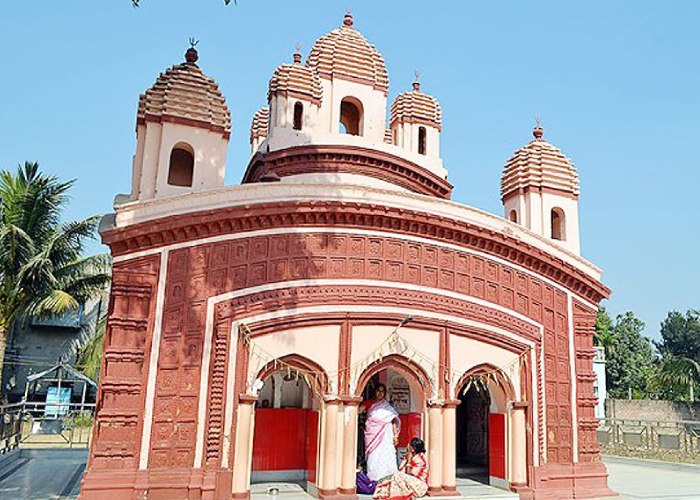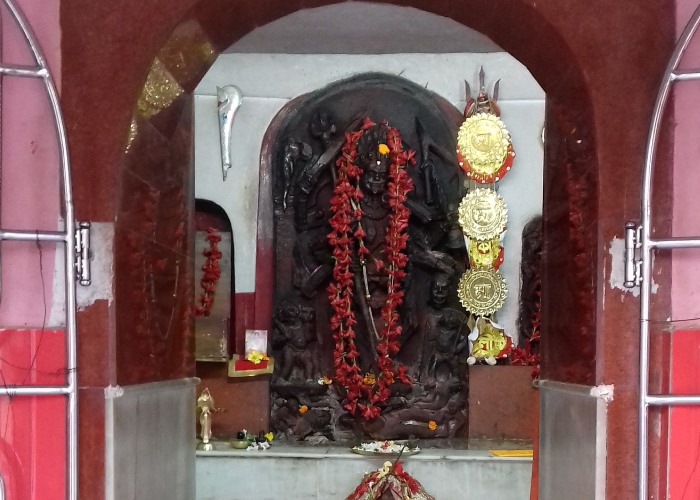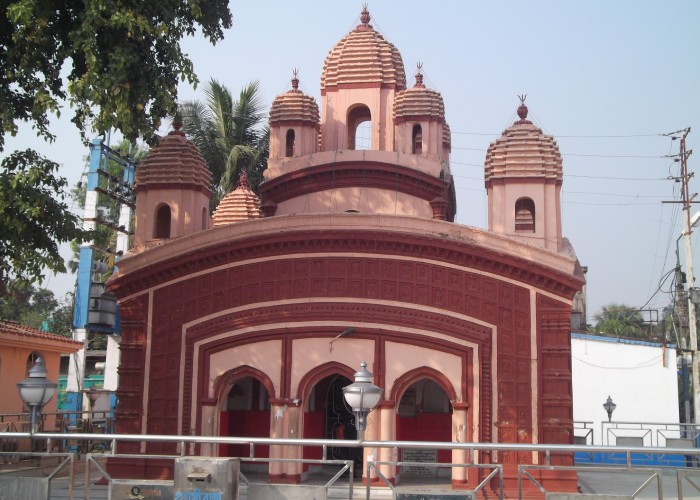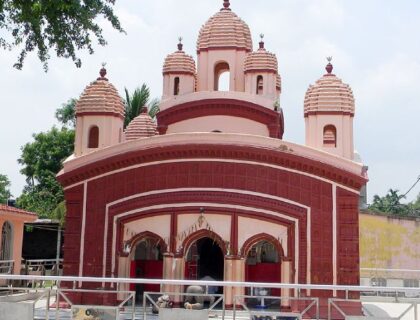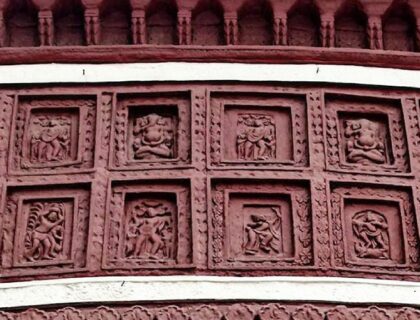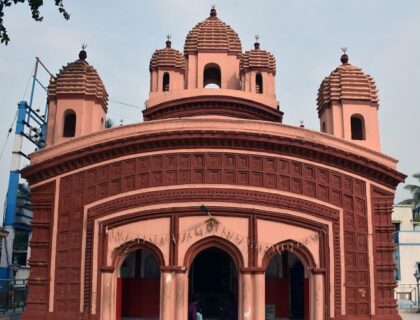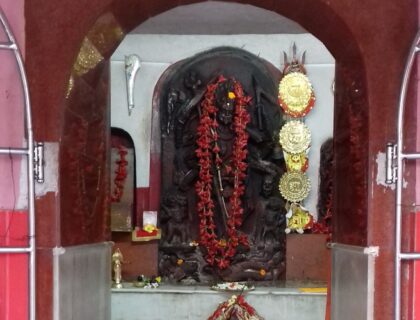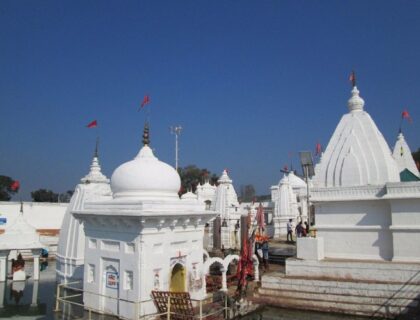Kankaleshwari Shaktipeeth
The Kankaleshwari Shaktipeeth or Kankhalitala Temple is located in the town of Kankhalitala, close to the River Kopai, on the Bolpur-Labpur Road, West Bengal. The temple is known as the “Navaratna (Nine Gems) Temple” and is distinguished by its nine peaks. The temple is also known locally as Rakta Tola (also known as “Blood-Temple”) and Kankal Bari (also known as “House of the Skeleton”).
Kankalitala is a Temple town in the Bolpur subdivision of Birbhum district. The Kankhalitala Temple about 8 km northeast of Shantiniketan town in Bolpur, is one of the 51 Shaktipeeths temples.
Story Behind Kankaleshwari Shaktipeeth
The goddess of Dakshayani, Sati, Parvati, or Durga—Hinduism’s most important woman and most powerful deity—is called Shakti. Durga Devi, Mahakali, and Gowri are the three main manifestations of Shakti, the power goddess. She is Adi Shakti’s avatar.
Sati was the Prajapati Daksha’s daughter, and she married Lord Shiva despite Her father’s wishes. Prajapati Daksha once put together a massive yagya, but he didn’t call his daughter and son-in-law. Sati was very saddened by Her father’s actions. When she got there, her father ignored the Sati and insulted her. She could not bear the insult of his husband (Lord Shiva) and She had jumped into the fire of Yagya and committed suicide. She passed away, but her body didn’t burn. Lord Shiva had taken His Virabhadra Rupa out of rage. Daksha’s head was cut off by him, but in the end, He forgave him by bringing him back to life.
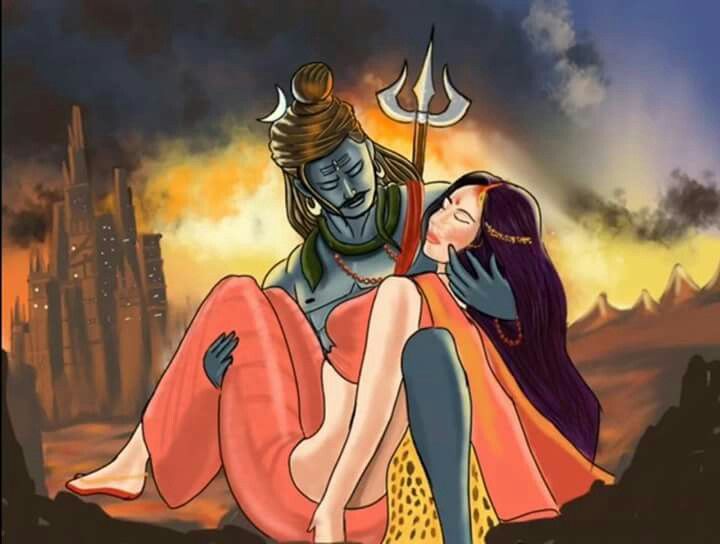
Lord Shiva, devastated, had taken Sati’s body and wandered the universe. Finally, Lord Vishnu used His Chakra to break Sati’s body into pieces. Each body part transformed into Shakti Pitha. The temple had emerged where the body part had fallen to the ground. In order to safeguard the Shakti Pitha, Lord Shiva created 51 Bhairava for each one.
It is regarded as one of the 51 Shaktipeethas where Lord Vishnu used His “Sudarshana Chakra” to break up Devi Parvati’s (alias Devi Sati’s) bones (waist) during the “tandava” (rampage) of Lord Shiva, the beloved husband of Devi Parvati.
History of Kankaleshwari Shaktipeeth
The 250-year-old skeleton idol of the temple, believed by archaeologists and other specialists to be the “Yakshini” of the pre-Aryan era, was discovered in 1700 AD. It was built by the Panchkot Raj. There is a rumour that this remote temple was used for human sacrifices.
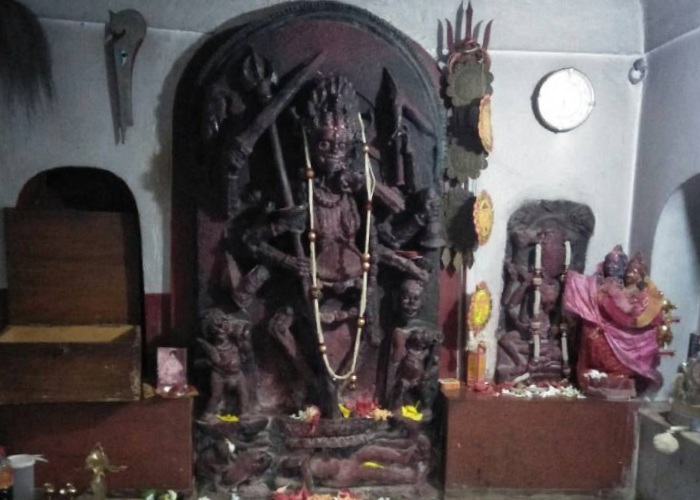
Archaeologists claim that this idol dates back to the Buddha or the Pala era. According to some experts, it may be from the Jain era and has been influenced by the “Buddhist Tantra.” Although the precise historical date of this idol has not yet been established, it is generally accepted to be approximately 2,000 years old.
The architecture of Kankaleshwari Shaktipeeth
A tower, a large gate, and a couple displaying a farmer or labourer on the right side of the gate await devotees at the entrance. A vast open space with the temple visible can be seen after crossing two bridges and going through the winding lanes. We are aware that this type of temple is built in the Navaratna style and has two main levels, each with four spired corner pavilions and a central pavilion with nine spires above.
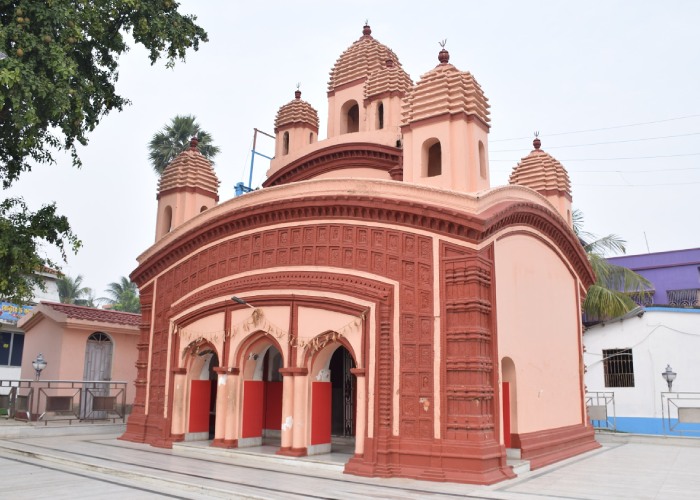
During the eighteenth century, this style of temple architecture was introduced in Bengal as a promotion of the “Pancharatna” style, which featured five pavilions—four at the corners and one higher up. Terracotta panels depicting sages, kings, mendicants, and family members make up the front decorations of the temple, which is situated in a square courtyard. There are three adjacent chambers in the temple.
The Kankaleshwari Kali idol is seated in the main house (according to rumours, there is only a large-framed photograph of Devi; there is no idol of a goddess). This sculpture is made of precious stone carved on an integrated black Basalt stone and becomes like the human skeleton in which muscles, bones, veins and arteries are evident. There are Shivlingas and tridents in the remaining two.
Facts about Kankaleshwari Shaktipeeth
- The famous and ancient Kankaleshwari Shaktipeeth temple is situated about 8 km northeast of ‘Shantiniketan town in Bolpur on the bank of River Kopai on the ‘Bolpur-Labpur Road’.
- Mata Kankaleshwari Kali has been worshipped at the time of the annual Kali Puja with devotion and enthusiasm for years at this temple complex.
- The Kankaleshwari Kali stands on a Lotus which comes from Shiva’s navel, and the Kamakhya also sits upon a Lotus that origins in Shiva’s navel.
- Outstandingly Maa Chamunda’s image is worshipped here as a divine mother and protector of the village.
Festivals In Kankaleshwari Shaktipeeth
- Durga Puja. (Winter) – Devotees celebrate Navaratri at this temple in the month of Ashwin (Sep-Oct).
- Navaratri. (Summer) – They celebrate other Navaratri in the fortnight of the Chaitra (March-April). Every nine days they worship Navadurga (nine Durgas).
- Diwali – Diwali is one of the most admired and auspicious festivals in the town.
- Mahashivratri– A grand fair is organized at the temple during the occasion of Maha Shivratri.
- Ram Navami is the other festival celebrated with great pomp and splendour.
How To reach Kankaleshwari Shaktipeeth
Kankaleshwari Shaktipeeth Temple is located in Kanchan Nagar of Bardhaman town.
By Air: Nearest Airport is Netaji Subhas Chandra Bose International Airport.
By Railway: The nearest rail station is Bolpur Railway Station. Kankaleshwari Kali Temple has situated about 9 km from Bolpur.
Nearest Bus Station/Cabs: From the Bardhaman Railway Station, take a bus to Kanchanpara. From there ask for directions to Kankalbari.
Support Us
If our content helps you even 1% in gaining information about the temple, please support us by contributing any amount, our UPI ID is - q417999792@ybl Or pay using QR CODE >>> Click Now
Location
Facilities
- Drinking Water
- Pooja Item Shops
- Prasad Shops
- Restaurants Nearby
- Resting Room

